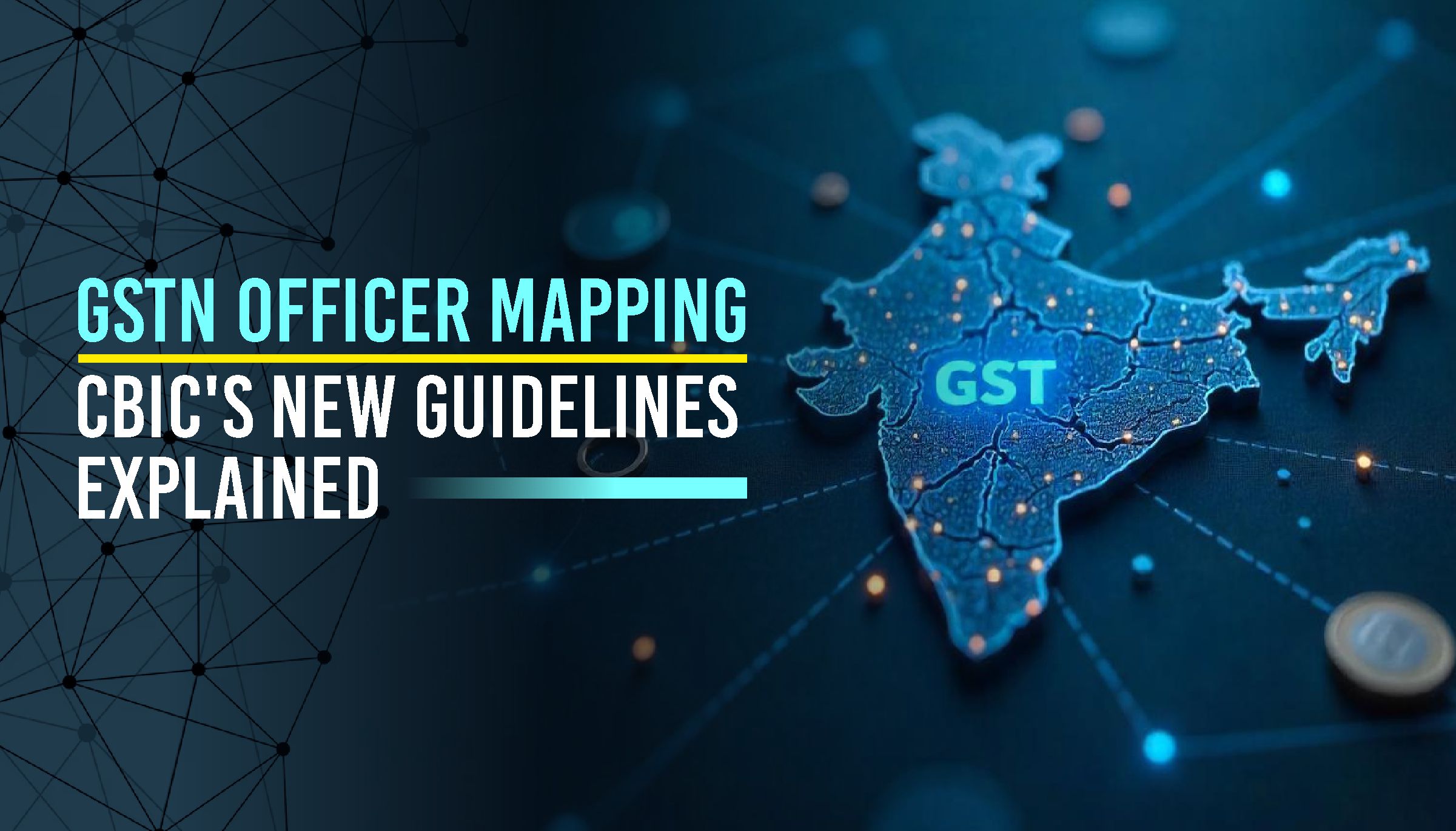GSTN Officer Mapping: CBIC’s New Guidelines Explained

The Central Board of Indirect Taxes and Customs (CBIC), through its Instruction No. 04/2024-GST dated October 4, 2024, has introduced vital updates to enhance the accuracy and efficiency of officer mapping and de-mapping on the GSTN portal. These changes are designed to ensure smoother operations within the GST administrative framework, particularly in relation to officer postings and jurisdictional assignments.
Objective of the Instruction
The primary objective of Instruction No. 04/2024 is to improve the accuracy of officer mapping on the GSTN portal to reduce errors in GST assessments, audits, and compliance functions. By ensuring that officers are mapped correctly to their jurisdictions and swiftly de-mapped upon transfer or reassignment, the CBIC aims to:
-
Prevent delays in GST-related processes.
-
Reduce mismatches between officer postings and jurisdictional responsibilities.
-
Minimize the chances of erroneous tax assessments and audits.
Challenges Addressed by the Instruction
One of the main issues identified by the CBIC was the problem of officers remaining mapped to their previous jurisdictions even after being relieved from their positions. This discrepancy has caused several challenges in the past, such as:
-
Issuance of incorrect notices or assessments.
-
Delays in tax dispute resolution.
-
Miscommunication between assessees and GST authorities.
Additionally, the incorrect mapping of officers has, in some cases, led to fraudulent GST refund sanctions by officers who were no longer in their designated jurisdictions. These lapses highlighted the need for more robust systems to track and manage officer postings on the GSTN portal.
Systemic Enhancements Proposed
1. Prompt De-Mapping After Officer Relocation
The Directorate General of Vigilance (DGoV), a body within the CBIC, reported cases where officers were not de-mapped from the GSTN portal after being relieved from their positions. To address this, the DGoV has proposed the following changes:
-
Officers must be promptly de-mapped from their field formations on the GSTN portal after the completion of GFR-33 (a form related to officer postings).
-
This measure aims to prevent officers from continuing to operate under the jurisdiction they have been relieved from, reducing the risk of administrative errors and fraudulent activity.
2. Supervisory Tracking Mechanism
To ensure the proper implementation of these changes, the DGoV recommended that supervisory officers, preferably at the rank of Joint Commissioner or Additional Commissioner, track the de-mapping process. The following steps are recommended:
-
Supervisory oversight: Supervisory officers are tasked with ensuring that officer mapping and de-mapping are carried out correctly and without delay.
-
Compliance reporting: A compliance report should be submitted to the jurisdictional Commissioner/Principal Commissioner or their equivalent within a specified period, confirming the accurate de-mapping of officers.
3. Establishing Accountability
The CBIC has also emphasized the need for clear accountability regarding officer mapping and de-mapping processes. The instruction calls for the establishment of specific responsibilities for jurisdictional officers in charge of managing officer postings on the GSTN portal. This will ensure that:
-
Any delays or errors in the mapping process can be traced to specific officers.
-
There is a structured chain of command for addressing any issues related to officer postings.
Ensuring Compliance
In light of these instructions, the CBIC has directed all Principal Commissioners/Commissioners to ensure strict adherence to the guidelines set forth by the DGoV. This includes:
-
Regular audits and reviews of officer mapping and de-mapping processes.
-
Prompt reporting of any discrepancies or delays to the higher authorities.
-
Ensuring that officers responsible for these processes are held accountable for any lapses.
The CBIC’s focus on real-time updating of officer information on the GSTN portal is crucial for ensuring that GST administration remains efficient and transparent, ultimately benefiting both the tax authorities and taxpayers.
Impact on GST Administration and Compliance
The proper implementation of Instruction No. 04/2024 is expected to bring several positive outcomes for GST administration, including:
-
Improved efficiency: By ensuring that officers are accurately mapped to their jurisdictions, the CBIC hopes to reduce the administrative burden on tax authorities and expedite the resolution of tax disputes.
-
Enhanced transparency: The systemic changes will ensure that all officer postings are visible in real-time on the GSTN portal, reducing the chances of miscommunication and errors.
-
Faster compliance processing: With officers being correctly mapped to their jurisdictions, the process of GST assessments, audits, and dispute resolution will become more streamlined, reducing the time required for compliance.
GST Instruction No. 04/2024 marks a significant step towards improving the operational efficiency of the GST administration in India. By addressing long-standing issues related to officer mapping and de-mapping on the GSTN portal, the CBIC is taking proactive measures to ensure smoother workflows, reduce delays, and enhance overall transparency in the system. These changes, if implemented effectively, will benefit both the tax authorities and the taxpayers, contributing to a more responsive and accountable GST administration.
